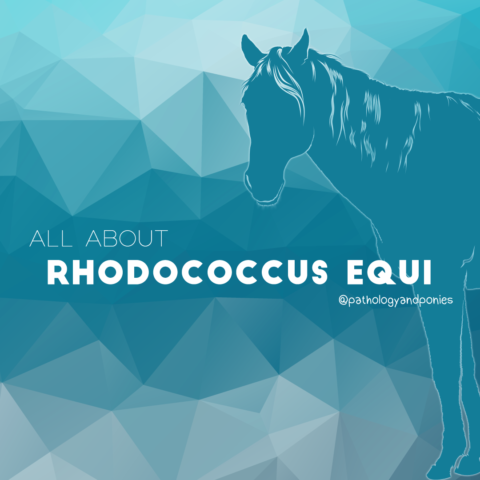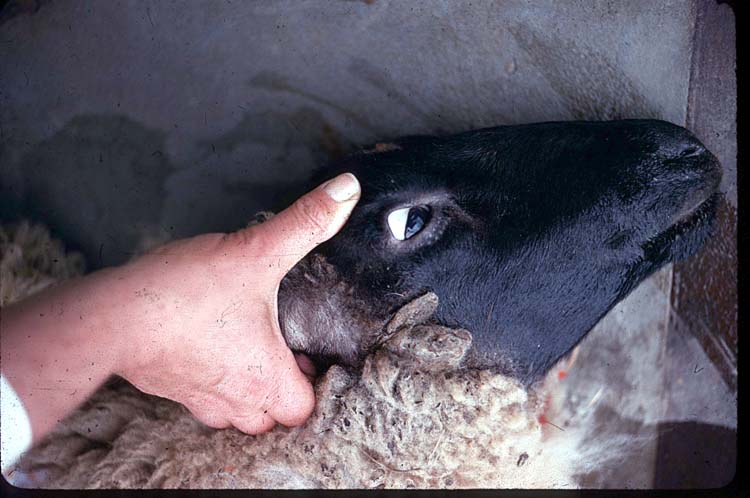
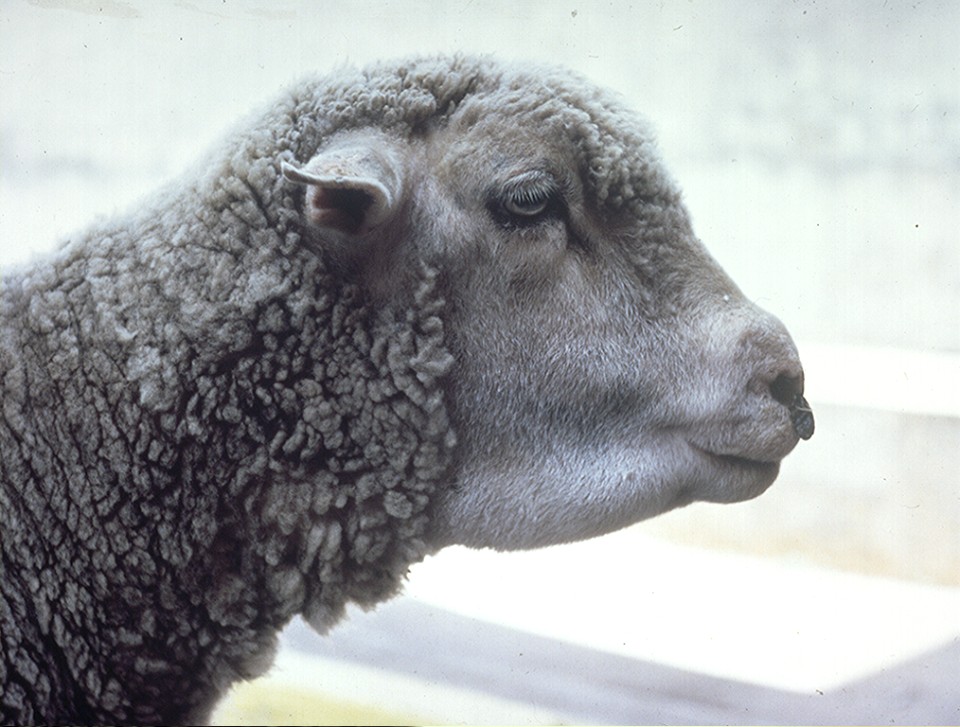

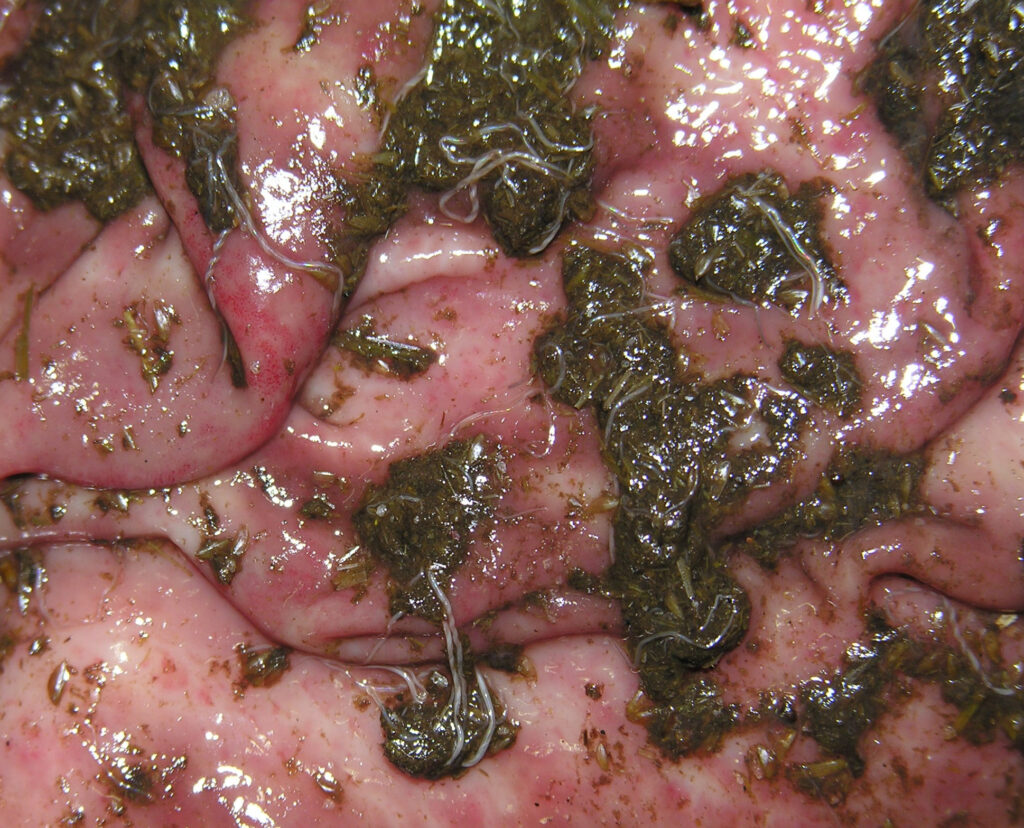
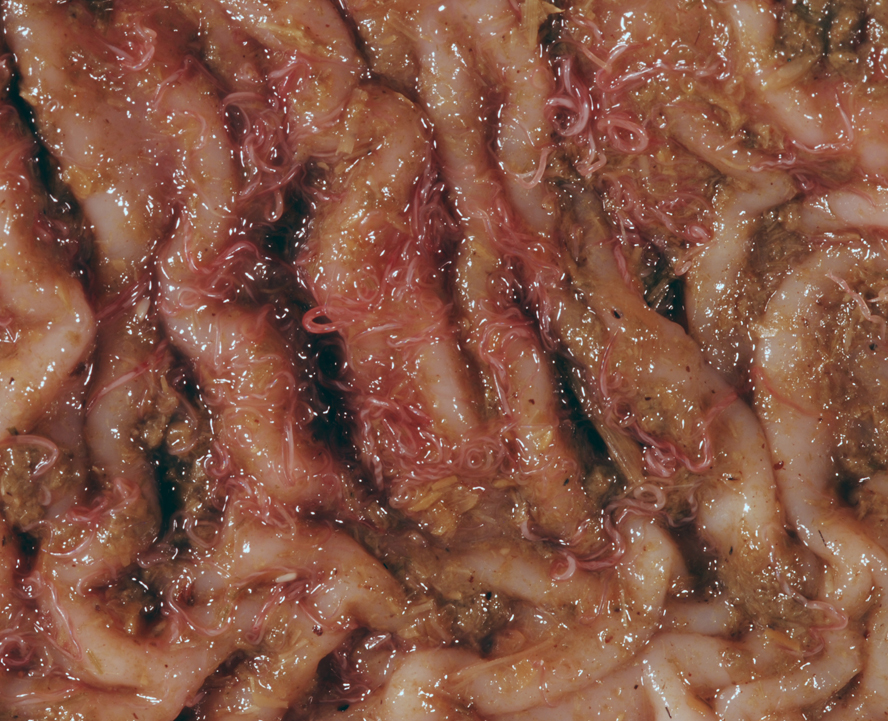
Today’s path rounds are on 𝐛𝐚𝐫𝐛𝐞𝐫 𝐩𝐨𝐥𝐞 𝐰𝐨𝐫𝐦𝐬!
𝐖𝐡𝐚𝐭 𝐢𝐬 𝐢𝐭?
𝐁𝐚𝐫𝐛𝐞𝐫 𝐩𝐨𝐥𝐞 𝐰𝐨𝐫𝐦𝐬 are more scientifically known as 𝐇𝐚𝐞𝐦𝐨𝐧𝐜𝐡𝐮𝐬 𝐜𝐨𝐧𝐭𝐨𝐫𝐭𝐮𝐬. They are referred to as “barber pole” because the female worms are predominantly red, with some of the internal organs showing as bright white striping on the surface. Cool!
𝐖𝐡𝐨 𝐠𝐞𝐭𝐬 𝐢𝐭?
We most commonly see this infection in sheep and goats!
𝐖𝐡𝐚𝐭 𝐜𝐚𝐮𝐬𝐞𝐬 𝐢𝐭?
Sheep or goats will ingest the larval form of these worms, allowing them to develop in the 𝐚𝐛𝐨𝐦𝐚𝐬𝐮𝐦 (the “true” stomach of ruminants). As adults, the worms use their mouthparts to attach themselves to the abomasal wall, allowing them to feed on the animal’s blood. Gross. Eventually, they will produce eggs that are passed in the feces, allowing for infection of other animals.
𝐖𝐡𝐲 𝐢𝐬 𝐭𝐡𝐢𝐬 𝐚 𝐩𝐫𝐨𝐛𝐥𝐞𝐦?
As mentioned, these worms actually consume the animal’s blood! It is estimated that one worm can eat 0.05 mL of blood per day. If an animal is heavily infected, that’s a lot of blood being lost! Animals with severe infections have signs of 𝐚𝐧𝐞𝐦𝐢𝐚 (loss of red blood cells) such as pale mucous membranes.
All the blood loss means that normal blood proteins are also removed, which causes 𝐡𝐲𝐩𝐨𝐩𝐫𝐨𝐭𝐞𝐢𝐧𝐞𝐦𝐢𝐚 (low blood protein). This typically presents as 𝐞𝐝𝐞𝐦𝐚 (fluid in the tissues), because the missing proteins are unable to maintain the normal fluid balance. One of the most common areas for this edema to accumulate is under the jaw, which is called 𝐛𝐨𝐭𝐭𝐥𝐞 𝐣𝐚𝐰.
𝐇𝐨𝐰 𝐢𝐬 𝐢𝐭 𝐝𝐢𝐚𝐠𝐧𝐨𝐬𝐞𝐝?
Diagnosis can be somewhat challenging, as recently infected animals will not be shedding eggs in their feces yet, even if they have signs of anemia. So, many producers use the 𝐅𝐀𝐌𝐀𝐂𝐇𝐀 𝐭𝐞𝐬𝐭, which is simply a card with different shades of pink on it that you hold up to a sheep’s 𝐜𝐨𝐧𝐣𝐮𝐧𝐜𝐭𝐢𝐯𝐚 (mucous membranes around the eye). You compare the colour of the sheep’s conjunctiva to the card, and it will give you an idea of the severity of infestation! Sheep with white mucous membranes are severely affected, as red blood cells are what gives the mucous membranes their normal pink colour.
𝐇𝐨𝐰 𝐢𝐬 𝐢𝐭 𝐭𝐫𝐞𝐚𝐭𝐞𝐝?
Haemonchus is unfortunately resistant to many of our traditional anti-parasitics, however there are some new products that have been released that are effective against this worm. Severely affected animals have a poor prognosis, and are often euthanized, so these treatments are given to their friends in order to catch the infestation early in its course.
𝐏𝐡𝐨𝐭𝐨𝐬
1) A very anemic sheep with white conjunctiva!
2) Bottle jaw in a sheep with Haemonchus.
3-5) The worms themselves!
𝐒𝐨𝐮𝐫𝐜𝐞𝐬
Maxie, G. Jubb, Kennedy and Palmer’s Pathology of Domestic Animals, Volume 2. Sixth Edition.
Photos 1-5 © Noah’s Arkive contributors Ramos, Panciera, King, Rech licensed under CC BY-SA 4.0.


